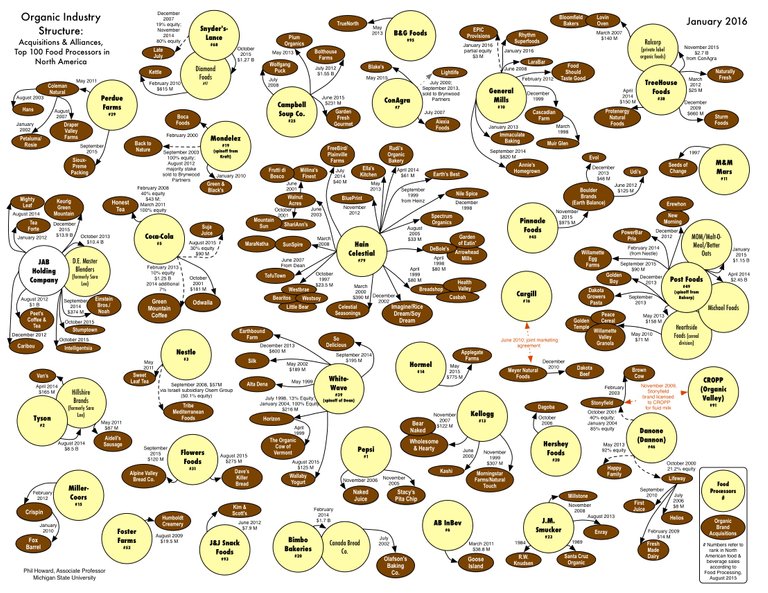Introduction
The little friend in your gut that makes you more than you might think...
As some of you might know, I'm fascinated with the symbiotic relationship between the human as an epiorganism and the saprophytic inhabitant living on our colon and intestines called the microbiome. You might also be aware that i'm raptured by mycophilia and this fact only connects me more to mycelium.
AKA the Gut-Brain-Axis, our enteric nervous system and intestines have critical receptors and important neuronal functions. Most of our neurotransmitters are also secreted by the enteric nervous system. Over 30 neurones and complex signalling pathways for enteric processes, such as immune response and functions like receptors for hypothalamic and pituitary hormones adapt to local colonic flora that manages nutrient availability and ensures gastrointestinal homeostasis.
This endobiogenic relationship goes way beyond a mutual relationship for intrinsic benefit. It exemplifies, that more than the brain, we are actually made up of a living and thriving eco-system also called gut microbiota. It also makes up most of our genome. This bidirectional communication through autonomic neurones with the central nervous system, directly interfaces the emotional and cognitive centers of the brain with peripheral intestinal functions via the Gut-Brain-Axis.
Apart from the remarkable finds on the Pathophysiological processes, this is still a very new and understudied field. The modulated effects on brain activity are observed in the vagus nerve that connects the viscera with the brain, finally reaching the insula. Many findings have proven dysbiosis to be the cause for central nervous disorders. A healthy balance in the gut flora therefore is crucial and can be achieved through probiotic treatment.
Botanically fermented foods such as Sauerkraut contain bioactive components such as prebiotic fibres. They interact with the gut microbiome, it's metabolites and various bioactive molecules improving gut health through probiotic and prebiotic properties. Microbes and bioactive molecules from fermented food integrate with gut commensals to produce immunomodulatory and anti-inflammatory metabolites that enhance our microbial genome, therefore giving us the ability to epigenetically update ourselves. Participating in metabolic processes, the gut microbiome has the ability to induce epigenetic changes. It modifies the host cell, that responds to stimuli and alters the host epigenome and augments gene expression.
Scientific Article: Crosstalk between the microbiome and epigenome
In this article i'd like to discuss Sauerkraut and how naturally fermented Sauerkraut can improve your overall health.
Sauerkraut Recipe
For the Following recipe I shall explain the steps on how to create naturally fermented Sauerkraut.
Ingredients:
White Cabbage
Red Cabbage
Savoy Cabbage
Salt
Black Pepper
Step One
Cut Cabbage
Step Two
Add Salt and maybe a bit of black pepper into the bowl with cabbage.
Step Three
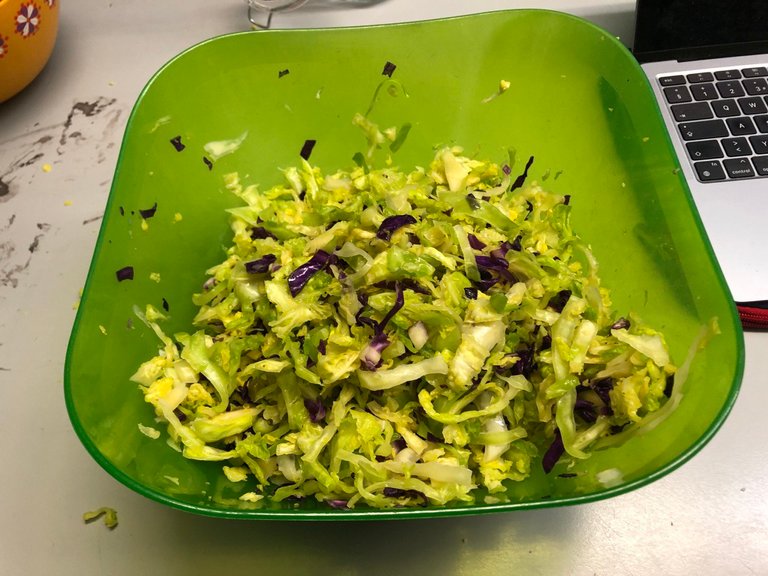
Knead cabbage for 10-15min until it becomes glossy and releases the juices from the cabbage.
Step Four
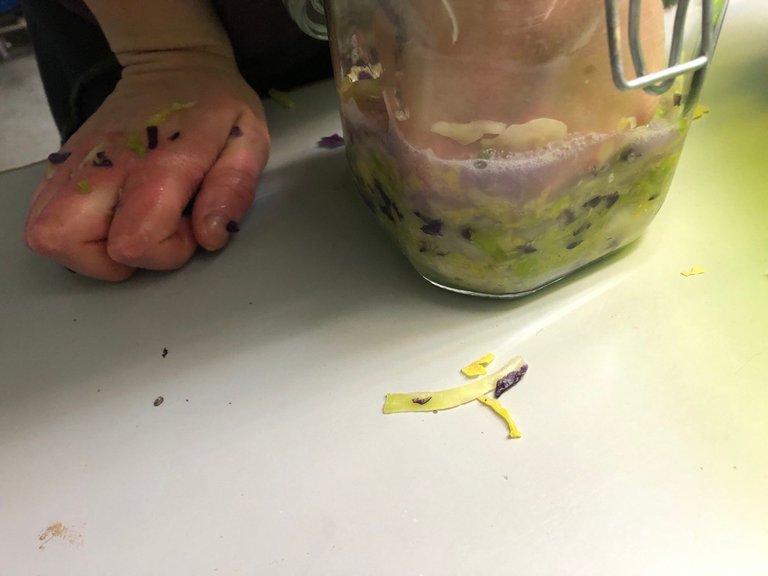
Press down the cabbage nice and tight in a mason jar. The liquid forms naturally from intense kneading. (No need to add any water)
Step Five
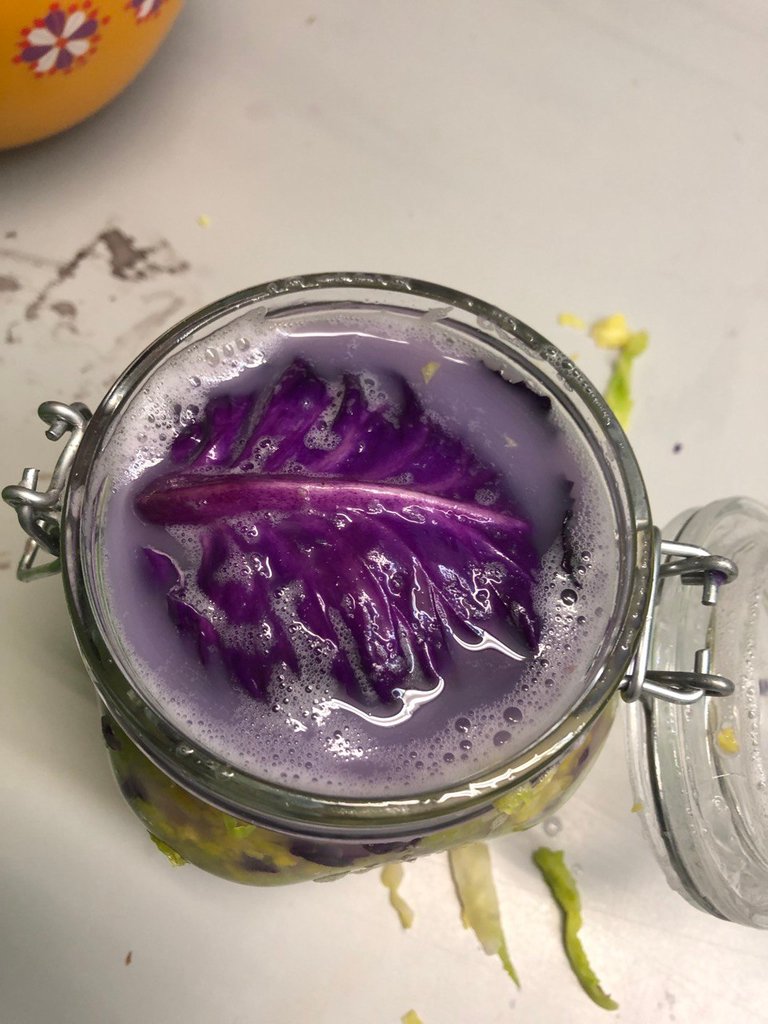
Add a leaf of Cabbage on top
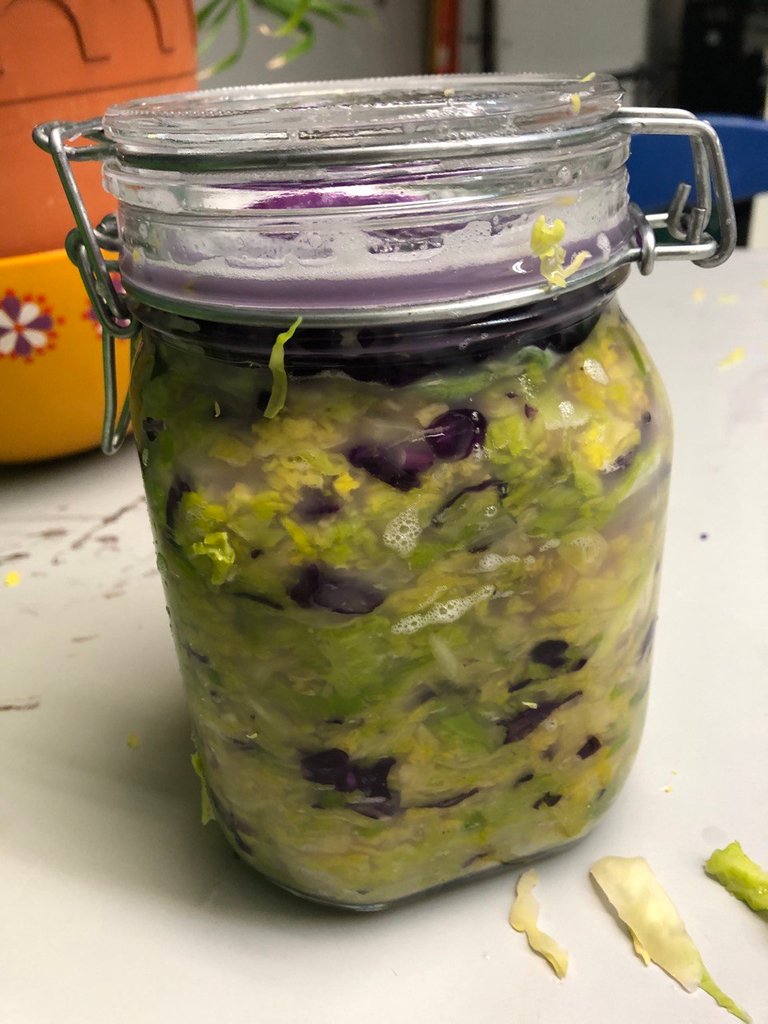
Now the mason jar is ready to be closed for fermentation.
Step Six
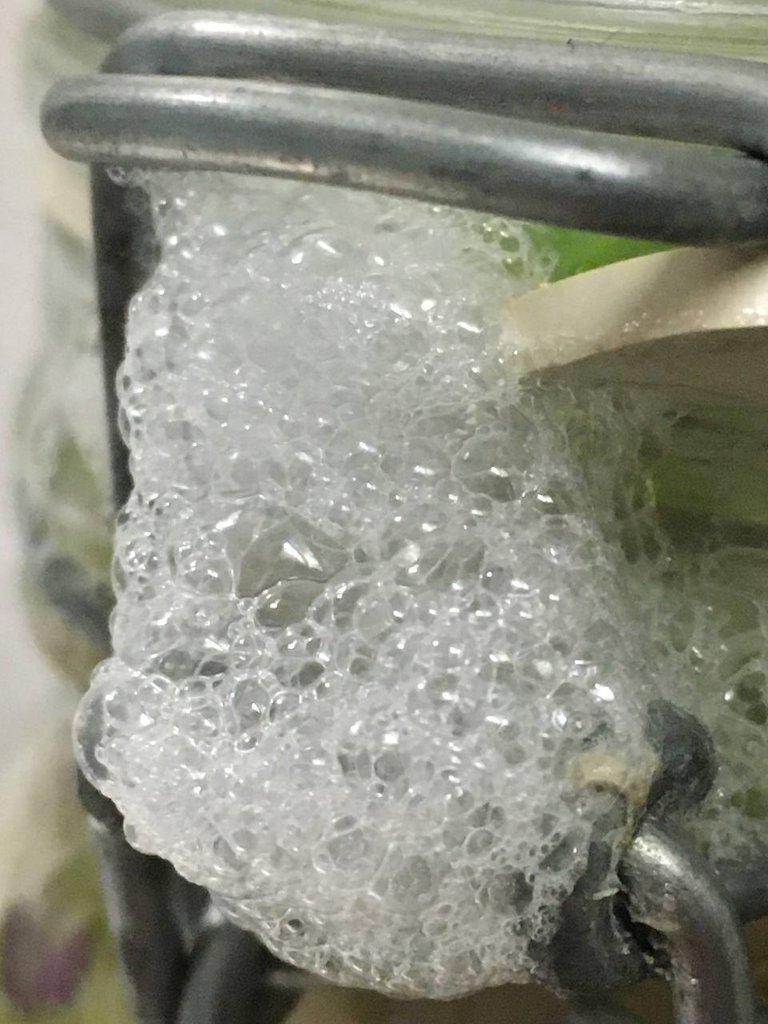
Check closed mason jar for possible release of air for the next 4-6 days. You can also use a cloth to cover the jar for that period.
Step Seven
Leave Jar closed to ferment for up to six months.
Below 7.5° C fermentation time up to 6 months.
At 18° C fermentation time 20 days.
At 32-36° C fermentation time 10 days.
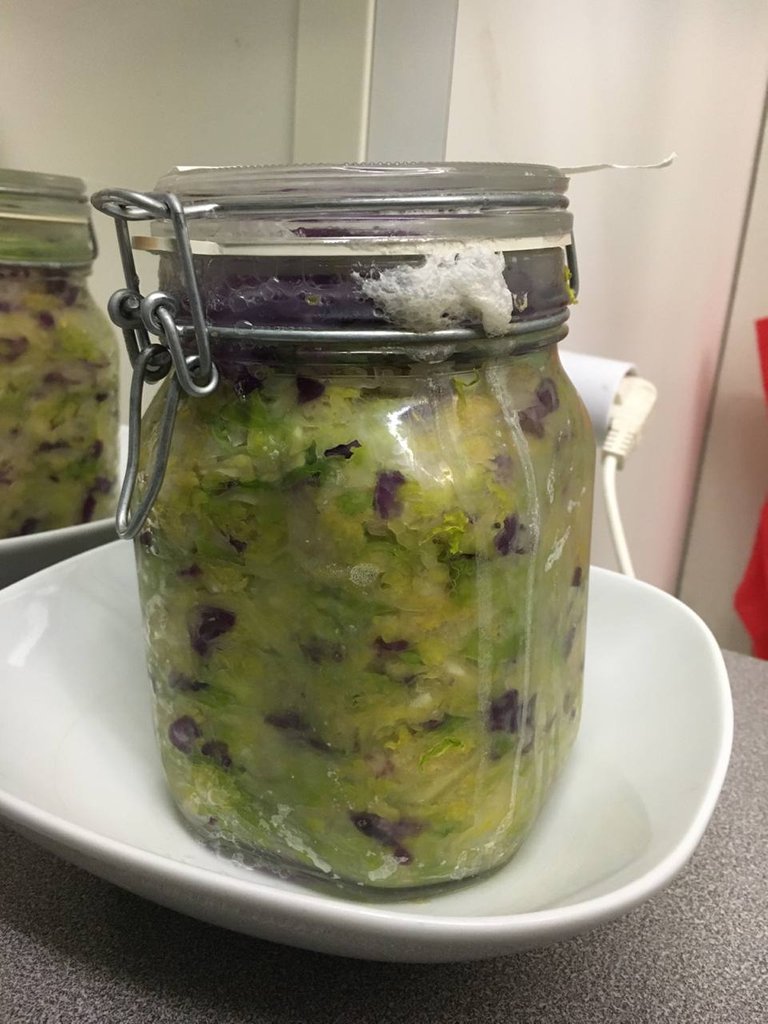
Conclusions
Leuconostoc mesenteroides - they are the smallest lactic acid bacteria. They start the fermentation less than a third of a percent of lactic acid. Also known as heterofermenters, they produce different compounds. These include lactic acid, acetic acid (vinegar), ethyl alcohol, carbon dioxide (soda gas) and mannitol. One of the bitter compounds produced by the Leuconostoc mesenteroides is later metabolized by Lactobacillus plantarum. The temperature should not exceed 22° C. higher temperature also affect the flavour.
Lactobacillus plantarum - This strain continues to produce lactic acid. Also known as a homofermenter it consumes sugars and produces lactic acid. This imparts the acidic taste to fermented food. The fermentation continues until all the sugars are exhausted.
Lactobacillus pentoaceticus ( L.brevis) - By now the acidity level reached arount 3% and the fermentation reaches it's climax.
Health Benefits
These Bacteria have metabolites that lower our blood sugar. It is also proven to reduce the effects of neurodegenerative diseases, alzheimer, dementia and possibly cure many more conditions.
L. mesenteroides is also known to help in the reduction or alleviation of flora imbalance that causes Candida albicans and Candida glabrata.
L. mesenteroides also mould the composition of microbes, creating immunity to pathogenic bacterial species.
In an age of dysbiosis, the same companies that sell you diet cola, produce glyphosate, antibiotics and prophylactics for live stock also produce anti-inflammatory drugs.
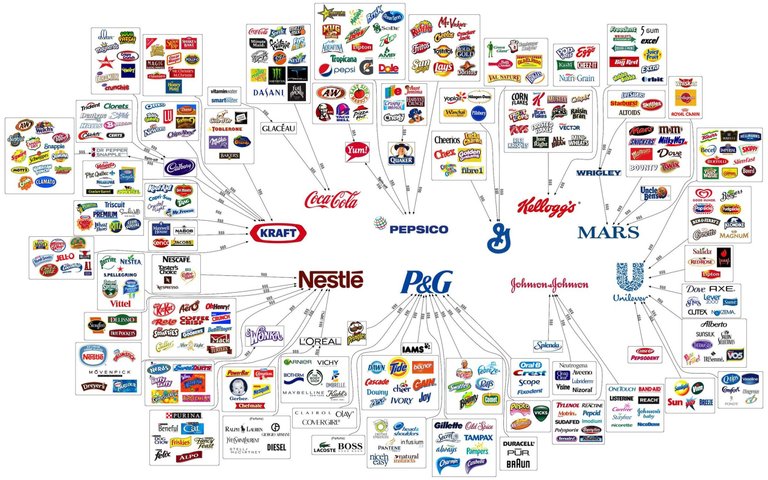
One wonders who all these food companies belong to?
Great Food
Fermentation can be a great way to add a prebiotic and probiotic addition to a balanced diet of natural foods. Fermenting various different vegetables can improve the gut flora and the structural integrity of your gut mucosal barrier. We all have a different enterotype, shaped by our body mass, the amount of exercise, cultural activities and dietary habits. Specially early on in life. This depends on whether one is born vaginally or with a c-section. Also, if you have a frenzy for cleanliness and sterilising everything, you might be surprised that this can be counter productive. Bacterial toxins outside interact with our GI and improves our flora and it's immunoregulatory response. These molecules include lactic acid bacteria (LAB), peptidoglycan, and exopolysaccharides (EPS). Their immunomodulatory capabilities has also given them the name immunobiotics.
Finally I decided to start fermenting more and hope I might have been able to inspire you. If you are more interested in this topic, try and search:
insular cortex, vagus nerve, parasympathetic nervous system, bifidobacterium and lactobacillus, gut-brain-axis, enterotype, systems biology, computational biology, in vitro colon stimulation, microbiome, microbial genome, microbiotic genome, mycobiota, saprophyte.
| Category | #hive-180569, #herbalhive |
| Camera | Iphone 8 |
| Location | Switzerland |
| Photographer | @yangyanje |

Here are all my previous recipes, always vegan in case you feel like trying something else:
If you're interested in reading my longest rant about being vegan ever, you should also check out my post: Vegan Cuisine

Vanishing
Dong Chang 东厂
aka Rane

'Observe it within, be with it. Merge with it. It will make you stronger. Once you become one and unite, it will feel like you are beyond limitations; for it is who you were always meant to be. - @yangyanje

Feel free to tip Wallets for support:
Bitcoin
3Mvofn1VynU168DuYtMsDqnUMSw7nQ8JEQ
Ethereum, XDAI, Polygon, Binance Smart Chain...: 0x0398edefB9d18A6a7c9fe573bdeedB7797283Ae5
Tezos:
tz1iSv5gWfPqUqaGChhfX8Vj3yquj36fad2Y
Cosmos:
cosmos1l66z8kxxgvftw7cprz5dlzvzm4tyefhrvm3w03
Solana:
9AmMfaerhNgsz2maByDUGrPMKYQRVeYQXJvCe9n48Fti
Terra
terra1m7q65zpa8y2zamjxqtnt43tprm36utkckdqf3a
Osmosis
osmo1l66z8kxxgvftw7cprz5dlzvzm4tyefhryqz7er


| 10 HP | 20 HP | 30 HP | 100 HP | 250 HP | 500 HP | 1000 HP | 2000 HP | 5000 HP |
|---|


 Admin at the Hive Rocks Community
Admin at the Hive Rocks Community

